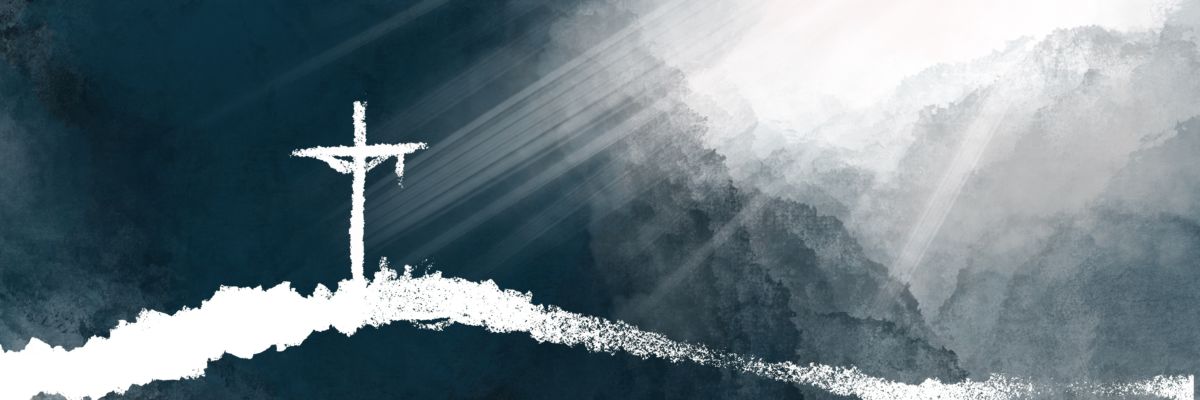
The cross is the abyss of wonders, the center of desires, the school of virtues, the house of wisdom, the throne of love, the theater of joys, and the place of sorrows. It is the root of happiness and the gate of heaven. There we may see a man loving all the world and a God dying for humanity. . . . There we may see the most distant things in eternity united. . . . It is the well of life beneath which we may see the face of heaven above and the only mirror wherein all things appear in their proper colors: that is, sprinkled in the blood of our Lord and Savior.
So wrote Thomas Traherne, seventeenth-century Anglican clergyman and poet.
This week is not about principles or about ideas or about symbols or about theories. This week is about Jesus and his cross. There’s a reason that we veil crosses and images during this season: so that we can train our eyes and our minds for the real thing. No representative sign or symbol will do. This week is not about crosses, but about the cross. It’s not about salvation; it’s about the Savior. It’s not about resurrection and new life; it’s about the Resurrection.
If you want a generic reminder about the fight between goodness and evil, don’t come to church this week; stay home and watch a classic superhero film. If you want a theory to know explain how Jesus died for your sins, go ahead and worship that theory. The Church doesn’t offer us general theories or explanations this week; she offers us sight. And that is to say that this week is about theory if we take that at its root meaning. Theoria means “beholding.” Analysis comes later, as it well should—there is much about this week that cries out for explanation. But one cannot analyze what one has never seen.
Holy Week is about sight. That is why so much of the liturgical weirdness of Holy Week centers on veiling and unveiling, on light and darkness. There is, we must admit, a certain drama to it all, a theatricality that bothers some who prefer to keep religion apart from the five senses. And far be it from me to suggest that we should somehow reverse modern trends toward literacy and the open study of Scripture. But let us not too easily throw aside our inheritance, as if we are so much more learned and sophisticated than Christians of the fourth or fifth or thirteenth century.
For my part, I rather doubt that we are. We have our smartphones and standardized time zones and online biblical texts, but our universe of scientific knowledge has in many ways shrunk, rather than expanded, our imaginations. We cannot easily go back to a world where demons and spirits and saints lurk around every corner. The disenchantment of that world is complete.
But although we know more about how we know what we know, what we actually know is less. We are forbidden, in this age, to acknowledge anything beyond the particular. No longer can we speak of “human nature,” or “the common good,” as if there were something universally true about human identity, or as if there were some real good toward which all things tend. And so, even while we define ourselves with more and more precision based on our particular and unique preferences or our particular and unique sense of self, we do so without having the slightest idea who we are, really, apart from the sum of particular parts.
What the old liturgies of Holy Week show us, in the end, is ourselves, at our best and our worst. And Holy Church dares to show us something particular and unrepeatable—events from an obscure corner of the first-century Roman Empire—and dares as well to tell us that these events are not just some particular story that is interesting for all of its details and fascinating plot twists: this particularly story is the story of the world. It is the story about what has happened to humanity and what will happen to humanity; it is the story about how we, human beings, did the worst possible thing that we could ever do, and how we, human beings, in this one particular human being—Jesus Christ—endured that cosmic agony and infused it with meaning and intent so powerful that even the most chaotic and meaningless horrors of existence in this world take on a new and beautiful glory in its light
The cross is “the only mirror wherein all things appear in their proper colors: that is, sprinkled in the blood of our Lord and Savior.”
You don’t primarily think about a mirror. Either you look in it, or you don’t.
Mother Church guides us, today and this week, into the looking glass. What will we see there? Only time will tell.



